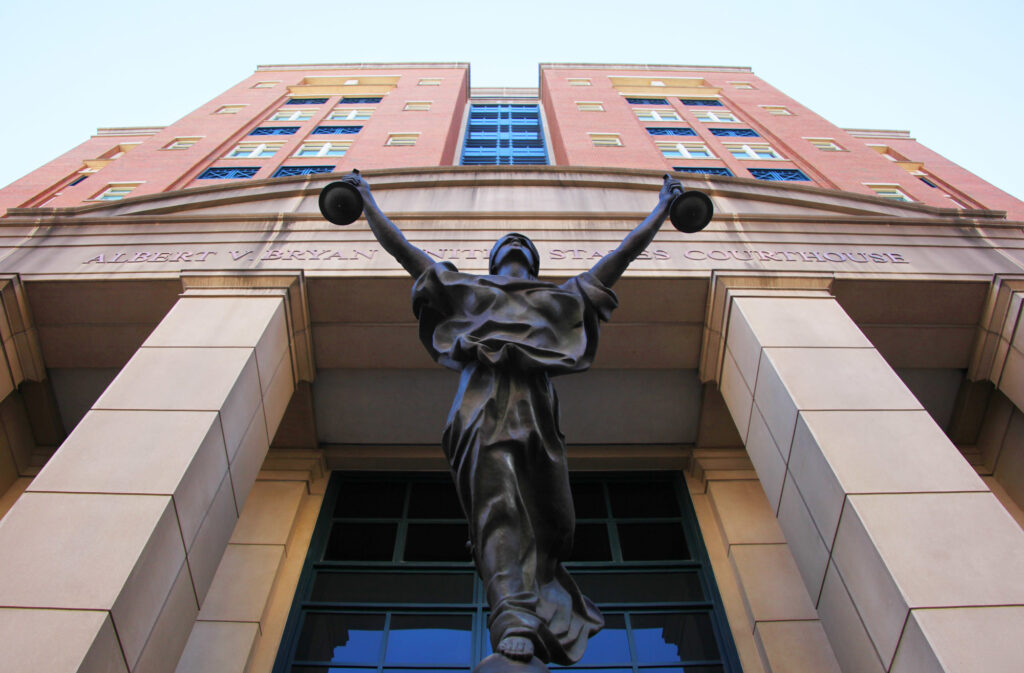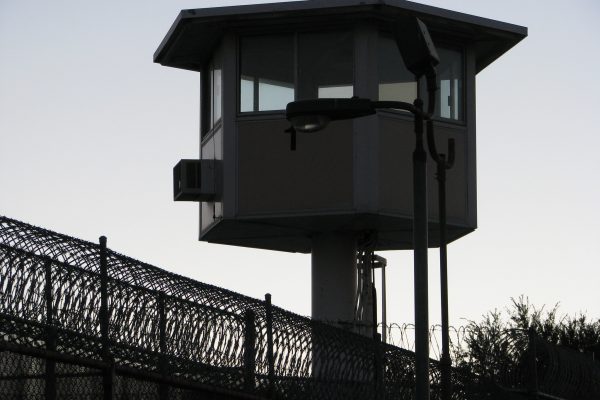As health systems struggle to manage the staggering influx of COVID-19 patients, legal institutions are just beginning to confront a new wave of issues: the disputes over who will bear the many costs of the pandemic and our response to it. Two weeks ago, for example, the family of a Walmart employee who died from COVID-19 filed a wrongful death lawsuit against the world’s largest company by revenue, alleging that it failed to adequately screen and protect its workers.
As the economic fallout from COVID-19 continues, the kind and number of legal disputes will proliferate dramatically.
As the economic fallout from the disease continues, the kind and number of these cases will proliferate dramatically: business disputes over whether insurance policies cover losses; tenant and landlord disputes over unpaid rent and wrongful evictions; borrower and bank disputes over the terms of loan deferment or forbearance; and more, touching on nearly every aspect of economic and social life. For many Americans it is in these contests that the life-changing implications of the coronavirus will play out most consequentially—determining whether a family can stay in their home and keep from going hungry, or whether a small business can keep the lights on.
Legal protections have emerged in recent weeks to protect people from the worst of these consequences, but they require a just and efficient dispute resolution system to be truly effective. Many jurisdictions have temporarily prohibited evictions, for example, but this new protection will only be useful if tenants can enforce their rights in practice. Similarly, a key plank of the federal stimulus is increasing unemployment benefits, but those benefits have to reach the people they’re designed to help—which can’t always be taken as a given. The pandemic makes especially urgent a core truism of the law: for legislative promises to be more than just ink on paper, they require a functioning civil justice system ordinary people can turn to in order to have their legal rights and responsibilities enforced.
For legislative promises to be more than just ink on paper, they require a functioning civil justice system ordinary people can turn to in order to have their legal rights and responsibilities enforced.
Unfortunately, there is a great deal of dysfunction in the civil justice system we have. Just as the coronavirus has laid bare critical, preexisting flaws in our public health and safety net infrastructure, so the legal cases arising now will both reveal and exacerbate key shortcomings in our civil justice system. Handling these cases—a large number of which will need to be dealt with in the midst of social distancing measures—will require addressing funding shortfalls and implementing tools such as online dispute resolution that have been used only minimally in many places.
The pandemic will thus make concrete the faults that have accumulated in our civil justice system, and, if we respond adequately, may help point the way forward for much-needed changes. In particular, the crises in the civil legal system precipitated by the coronavirus will highlight the fact that our problems of civil justice are truly national ones, and demand a solution that is national in scope. There is little federal support for existing state and local civil justice programs, with funding lagging far behind other services. As Congress considers continuing legislation to respond to the pandemic, it should be sure to include support for state and local civil justice systems. As the days ahead will make clear, these programs are crucial parts of our public infrastructure, and Americans around the country will bear significant costs if they continue to be neglected.
• • •
The civil justice system has languished in varying states of disrepair for years. In the aftermath of the 2008 recession, states around the country cut courts’ budgets significantly. The Los Angeles Superior Court system alone faced annual shortfalls between $80 million and $140 million; in Florida, court budget shortfalls amounted to more than $100 million, and almost 300 court staff positions were lost. Waiting times and case backlogs increased; in New York, caseloads grew to an average of 3,500 per judge.
Starved of funding, courts cut back on security, eliminated advocates for minors, suspended support for pro bono programs, and at times simply had to shut down. Some courts have paid their staffs wages that are below the poverty level; at least one courthouse opened a food pantry to support its employees. Many of these shortfalls persist to this day; nearly ten years after the 2008 recession, California still had more than 200 courtrooms closed and nearly 4,000 fewer court staff. In 2018 a survey by the National Center for State Courts found that forty percent of state court systems were not in better shape financially than nine years earlier. Meanwhile, more and more people who need to use the courts are having trouble finding or affording lawyers to represent them. As a result, the civil justice system in recent years has been defined by a combination of increased need and decreased resources.
The U.S. criminal justice system has received much-needed public scrutiny in recent years. But fewer people are used to thinking of the civil justice system as a whole.
Part of the problem is a general lack of familiarity as to what role the civil justice system plays in society. Thanks to the dogged efforts of advocates and activists, the U.S. criminal justice system has received much-needed public scrutiny in recent years. But fewer people are used to thinking of the civil justice system as a whole: the combined set of institutions—primarily courts and some government agencies—that enforce the legal rights of private parties. The civil justice system is where an employee can turn if she is fired because of her race or discriminated against because of her gender; where a tenant can go if his landlord shuts off electricity or water to force him out of his apartment; and where consumers can band together for relief if they are the victims of scams. But rather than looking at our civil justice system as a whole, our political process often addresses these problems individually. And many people who experience these issues do not even recognize them as ones the civil justice system can help resolve.
This lack of public understanding and support translates into a system that fails to provide adequate services to people around the country. Over the last three decades there has been a massive increase in the proportion of parties in court who do not have lawyers representing them. At the turn of the century, most cases involved parties who were represented by lawyers; today the opposite is true—most cases involve at least one party who is not represented—and an estimated 16 million Americans go through the civil justice system without lawyers every year.
Those are just the people who make it into the system. As Marc Galanter described in his classic article, “Why the ‘haves’ come out ahead,” many people don’t even make it into court in the first place. Legal rules and procedures tend to be shaped by repeat players who are more likely to profit from a justice system defined by information asymmetries that make it difficult to navigate. There are significant barriers to finding an attorney, court procedures are often hard to understand, and courthouses are hard to reach. As a result, everyday consumers and employees often just have to “lump it,” as Galanter put it, accepting their losses and never filing suit because they don’t know how likely they are to succeed and can’t afford the high costs of trying.
These legal issues often arise out of the most pressing conflicts people experience: a fight over an eviction, or child custody after a divorce, or nonpayment of health insurance benefits.
As is often the case when public infrastructure fails, the costs of a severely flawed civil justice system are born disproportionately by poor and marginalized individuals and communities. According to the Legal Services Corporation, which administers most legal aid funding from the federal government, in any given year about 70 percent of low-income households experience at least one civil legal problem. These legal issues often arise out of the most pressing and significant conflicts people experience: a fight over an eviction, or child custody after a divorce, or nonpayment of health insurance benefits. These high-stakes disputes happen with alarming frequency. In 2016, for instance—when the economy was in much better shape than it will be in the months ahead—over 2.3 million evictions were filed around the country, or an average of four new evictions every minute.
Low-income households tend to be the ones with the fewest resources to weather these disputes if they cannot enforce their legal rights. A dispute over a $1,200 monthly rent payment, or $900 in unpaid wages, matters much more to those who do not have the reserves to make ends meet without the money at issue. But about two-thirds of the people who seek out legal aid receive inadequate or no support because of budget constraints. The people they’re up against, meanwhile—banks, property owners, employers—often have lawyers. Statistically, a typical case in the civil justice system is one in which a debt collector or landlord has a lawyer and is pursuing a claim against a defendant who is fending for herself. In effect, then, the civil justice system can actually compound preexisting inequalities, rather than mitigating them—even if the substance of the law at issue favors the less powerful party. Tenant, consumer and worker protection laws are important, but they are inert without effective enforcement.
Because of the way our civil justice system is structured, not having access to a lawyer makes a big difference in many of these disputes. In most cases, legal processes are based on the traditional adversarial model in which each party is represented by a lawyer. Without a lawyer our legal system makes it exceedingly difficult to understand how to bring a claim or defend against one—how to present evidence, how to make relevant arguments, and even which form is the right one to fill out for a given issue.
It shouldn’t be surprising, then, that one recent study in Philadelphia found that about 78 percent of eviction cases involving an unrepresented tenant resulted in a disruptive displacement, while only about 5 percent of cases reached that result when tenants had lawyers. To some extent this massive difference may reflect a difference in case quality—lawyers are more likely to take winning cases. But studies regularly find that litigants do better when they have lawyers. And even if only a fraction of the difference in outcomes is attributable to the sheer fact of having a lawyer, that becomes a vast disparity when multiplied by the millions of Americans with serious disputes who enter the civil justice system every year without a lawyer.
Legal rules and procedures tend to be shaped by repeat players who are more likely to profit from a justice system defined by information asymmetries that make it difficult to navigate.
The current pandemic is set to take this already struggling system and push it to—and quite likely over—the brink. Early data suggests that nearly a third of renters did not pay their rent on time at the beginning of the month, an increase of more than fifty percent over the usual rate. Unemployment is skyrocketing; some 22 million Americans have already filed for unemployment benefits. Businesses are defaulting on their obligations. The economic consequences of COVID-19 will hit the civil justice system from both sides of supply and demand: as payments dry up and contractual obligations go unperformed, the number of disputes brought into the legal system is likely to expand dramatically. At the same time, the people who need the legal system to protect them in these disputes—workers, tenants, small business owners, and others—will have fewer resources to marshal to their defense. And even after the immediate health disaster is over, the disputes will remain; many will require months or years to make their way through the court system until a settlement or judgment finally resolves them.
The coronavirus is also likely to highlight a particular problem with our civil justice system that has worsened in recent years—how to handle the multitudinous, small-value claims that often make up the basis for class actions. Take, for instance, the recent revelations that banks may seize portions of the $1,200 stimulus checks that the IRS is sending via direct deposit and use them to pay down account holders’ preexisting debts—a practice that is likely illegal in some states. This could easily become the kind of complex litigation that requires parsing the details of financial contracts and the interplay of state and federal law. The cost of hiring a lawyer for any one such case would vastly outweigh the potential to get some portion of your $1,200 check back, but if many cases could be combined in a class action, recovery might be possible for many or all of the people whose money is wrongfully taken.
Unfortunately, though, in recent years the Supreme Court has reinterpreted a century-old law, the Federal Arbitration Act, to allow banks and other companies to put forced arbitration clauses in their contracts that keep consumers from using class actions when they have been wronged. Forced arbitration, a deeply flawed practice in the best of times, threatens to seriously undermine legal safeguards designed to protect people in the midst of the current crisis.
• • •
Recognizing the impending challenges posed by coronavirus-related legal cases, many have stepped up to help manage the increasingly dire circumstances.
Echoing the legislatures and governors that have declared temporary bans on evictions, judicial systems in many states—including New York, California, Pennsylvania, Virginia, and North Carolina—have announced a moratorium on eviction proceedings that would oust tenants. Many courts, though, have kept their doors open for tenants to seek emergency relief against landlords who are attempting to force them out. Some state court systems, including Texas’s, have likewise suspended debt collection proceedings. To keep processing cases while social distancing, many courts are experimenting with new mechanisms for online dispute resolution and videoconferencing for oral arguments. The most recent stimulus package from Congress included $50 million in increased federal legal aid funding. And these are just the first steps—legislatures and court systems are going to need to adjust dramatically to deal with the combination of increased cases and decreased in-person services.
As is often the case when public infrastructure fails, the costs of a severely flawed civil justice system are born disproportionately by poor and marginalized individuals and communities.
Besides these legislative and judicial changes to business as usual, advocates have begun stepping up to provide new and different options to assist those with legal issues arising out of COVID-19. The American Bar Association has formed a task force to help identify problems and mobilize legal professionals. The Legal Services Corporation has created a grant program to help legal aid organizations build capacity for telework and remote access capabilities. Other organizations are attempting to help those in need without lawyers, such as groups providing online tools to generate letters to landlords explaining that they are unable to pay rent and invoking legal protections put in place because of COVID-19.
Some of the interventions in a pandemic—such as triage systems in a hospital—are ones that you hope to have to implement only during an emergency. But many of the measures on the table now are ones that civil justice reform advocates have been developing for years and should continue after. Budget cuts and courthouse closures have long made it difficult to access the civil justice system in many parts of rural America, and expanding remote access to basic judicial services, or minimizing the number of required in-person visits, can help solve that problem. Efforts to provide email, text, and phone access to courts for victims of domestic violence—who are particularly at risk when quarantined with their abusers—can be useful in any context where a physical trip to court could be difficult to manage and might arouse suspicions at home. And automated services that help non-lawyers act on their legal rights are a particularly useful way of circumventing the need for lawyers—sometimes even courts—to begin with. These kinds of actions will help both now, when social distancing is mandatory and courts are handling essential cases remotely, and also when the inevitable deluge of cases come through the doors as courts reopen physically and restrictions on non-emergency filings are lifted.
Other temporary changes may not be worth extending beyond the most immediate emergency but still highlight how much room there is for shaking up the status quo in order to achieve worthwhile ends. Several states, for instance, have already temporarily waived bar passage requirements for this year’s graduating class of lawyers, as it becomes evident that it will not be safe to administer the bar exam as scheduled this summer. These waivers likely will not last.
But for years many have advocated for reforming the rules governing the practice of law to make space for paralegals or other non-lawyers to take on certain kinds of discrete legal services to lower the price of those services. Although a few states have begun acting on these suggestions, bar associations and state courts as a whole have been slow to progress. But the response to COVID-19 illustrates that the mere fact that the legal system has been organized in a particular way “forever” need not stand in the way of beneficial reforms when there is a good reason to change the structures and institutions in place.
• • •
The monumental challenge posed by the pandemic thus brings with it three kinds of opportunities for the civil justice system. First is a chance to further diagnose the system’s problems. Second is a means to build collective knowledge about how to implement useful reforms. And third is a window to generate broader understanding of the civil justice system and the political will to improve it. Conversely, the months to come also threaten to show us what happens if we fail to use these opportunities: in a system plagued by underfunding and access gaps, many Americans will be denied the law’s protections, with potentially life-altering consequences for them and their families.
Because so much civil justice is carried out by state and local courts, reforms are often focused at the state and local level. A national civil justice reform bill could put federal funding behind good ideas.
For long-time civil justice reformers and advocates, the most valuable opportunities will likely be the increased know-how and broader political engagement that could come from the days ahead. The knowledge we develop in dealing with COVID-19 will take a variety of forms. On the more durable side, court systems that take the time to develop, maintain, and tweak detailed policies on virtual courtrooms such as those put forward by the Michigan Supreme Court will emerge from the months ahead with a set of rules and procedures that can potentially be adapted to improve access in a post-pandemic world. Another variety is exemplified by the individual staff who will develop a wealth of experience with handling the myriad difficulties that arise when implementing these programs.
This form of knowledge may be less durable on its own, so court systems and legal reformers should be sure to try and formalize and maintain the knowledge gained during these forced experiments in legal services delivery. If necessity is the mother of invention, the inventions wrought by the brute necessities of this period may turn out to be tremendously valuable. But everyone involved in the civil justice system will have to take care to learn from these events and bring that knowledge forward into the future in a usable way.
In the end, though, all the know-how in the world will not be useful absent the political will to make the deep, structural changes that the civil justice system needs. Reformers around the country have generated good ideas and forward motion on civil justice issues for years, but have often been stymied by a lack of resources and attention. The need that will be brought about by the upcoming wave of legal disputes will represent both a test and an opportunity to make clearer to the public and political leadership the value that the civil justice system provides to society—and what is needed to make the promise of effective civil law enforcement a reality for everyone.
The upcoming wave of legal disputes will make clearer what is needed to make the promise of effective civil law enforcement a reality for everyone.
In particular, the national scope of the problems facing the civil justice system suggests that now may be a unique opportunity for national civil justice reform. Because so much civil justice is carried out by state and local courts, reforms are often focused at the state and local level. But a national civil justice reform bill could lift up the best ideas from the states in recent years, putting federal funding behind good ideas that often fail to get off the ground because of a lack of local support. No matter how you slice it, there is room for much more federal funding assistance to state courts.
On average, federal money supplies close to a third of state budgets overall, but so little money for civil justice programs that it might not even show up on a pie chart. Federal assistance for state criminal justice programs is in the hundreds of millions of dollars per year. By contrast, the main program of federal assistance to state courts for civil justice improvements—grants administered by the State Justice Institute—runs at about $5 million per year. And because arbitration clauses are given power by federal law, only a federal statute can repair the damage wrought by the Supreme Court’s expansion of forced arbitration in recent years.
Addressing immediate needs is crucial, as is continuing to enact laws and implement measures that provide greater assistance in critical areas such as debt collection and evictions. But due to the nature of legal disputes, the civil justice system will be dealing with the aftermath of the current crisis for months and years to come. Many people will come into contact with the civil justice system who are not used to thinking about civil legal issues in their day-to-day lives. The sad fact is that a large—possibly predominating—portion of those people will encounter firsthand the flaws that have built up in our system for years. But this increased exposure to the civil justice system, along with the reforms implemented in the effort to address the pandemic, may provide the space for a conversation that improves civil justice for many years to come.









